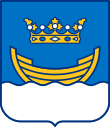
Helsinki is the capital and most populous city in Finland. It is located on the shore of the Gulf of Finland and serves as the seat of the Uusimaa region in southern Finland. Approximately 675,000 people live in the municipality, with 1.25 million in the capital region, and 1.58 million in the metropolitan area. As the most populous urban area in Finland, it is the country's most significant centre for politics, education, finance, culture, and research. Helsinki is situated 80 kilometres (50 mi) to the north of Tallinn, Estonia, 360 kilometres (220 mi) to the north of Riga, Latvia, 400 kilometres (250 mi) to the east of Stockholm, Sweden, and 300 kilometres (190 mi) to the west of Saint Petersburg, Russia. Helsinki has significant historical connections with these four cities.

A statue is a free-standing sculpture in which the realistic, full-length figures of persons or animals are carved or cast in a durable material such as wood, metal or stone. Typical statues are life-sized or close to life-size; a sculpture that represents persons or animals in full figure but that is small enough to lift and carry is a statuette or figurine, whilst one more than twice life-size is a colossal statue.
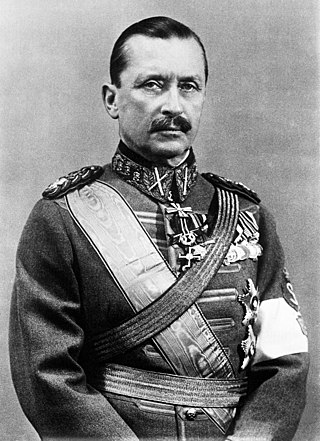
Baron Carl Gustaf Emil Mannerheim was a Finnish military commander, aristocrat, and statesman. He served as the military leader of the Whites in the Finnish Civil War (1918), as Regent of Finland (1918–1919), as commander-in-chief of the Finnish Defence Forces during the period of World War II (1939–1945), and as the sixth president of Finland (1944–1946). He became Finland's only field marshal in 1933 and was appointed honorary Marshal of Finland in 1942.

Kiasma is a contemporary art museum located on Mannerheimintie in Helsinki, Finland. Its name kiasma, Finnish for chiasma, alludes to the basic conceptual idea of its architect, Steven Holl. Kiasma is part of the Finnish National Gallery, and it is responsible for the gallery's contemporary art collection. Its central goal is to showcase contemporary art and to strengthen its status.

Havis Amanda is a fountain and a statue in Helsinki, Finland by the sculptor Ville Vallgren (1855–1940). The work was modelled in 1906 in Paris, and erected at its present location at the Market Square in Kaartinkaupunki in 1908. Today it is recognized as one of the most important and beloved pieces of art in Helsinki.

Senate Square presents Carl Ludvig Engel's architecture as a unique allegory of political, religious, scientific and commercial powers in the centre of Helsinki, Finland.

Mannerheimintie, named after the Finnish military leader and statesman Carl Gustaf Emil Mannerheim, is the main street and boulevard of Helsinki, Finland. It was originally named Heikinkatu, after Robert Henrik Rehbinder on the first part up to the current Kiasma Art museum and Turuntie after that, but was renamed after the Winter War. The change of name was also a reference to Mannerheim's victory parade along the road during the Finnish Civil War (1918), after German forces, allied with Mannerheim's Finnish forces, had retaken the city.

Kesäranta is the official residence of the Prime Minister of Finland, located in Helsinki in the neighborhood of Meilahti, overlooking Seurasaarenselkä.

The Mannerheim Museum is located in Helsinki, Finland. It is dedicated to preserving and displaying items related to the life and times of Marshal C. G. E. Mannerheim, a Finnish statesman and military officer. The Mannerheim Museum is located on top of a hill in a prestigious residential area next to the Kaivopuisto park in Helsinki. The building was the home of Mannerheim from 1924 to 1951. With the exception of a few rooms that have been converted for exhibition purposes, his home has been preserved in its original state.
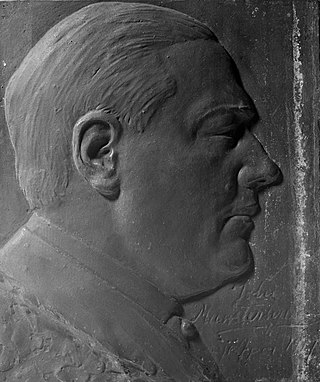
Johan Hjalmar (John) Munsterhjelm was a Finnish sculptor.

Marko Vuokola is a Finnish conceptual artist. He lives and works in Helsinki, Finland.
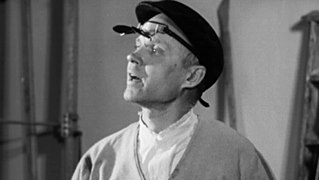
Aimo Johan Kustaa Tukiainen (1917–1996) was a sculptor from Finland. His best-known work is the Equestrian statue of Marshal Mannerheim in Helsinki.
Carl Gustaf Emil Mannerheim (1867–1951) was a Finnish military leader and statesman.

Louhisaari Manor is a historic baroque manor house in Askainen in the municipality of Masku, Western Finland Province, Finland. The mansion is the birthplace and childhood home of Carl Gustaf Emil Mannerheim, Finnish military leader, statesman and sixth president of Finland (1944–1946).
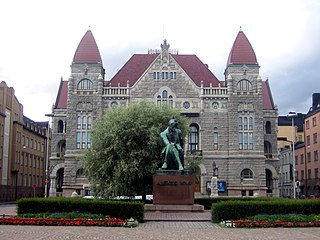
The Aleksis Kivi Memorial is a statue dedicated to the Finnish author Aleksis Kivi (1834–1872), designed and sculpted by Wäinö Aaltonen.

Johan Albert Edvard von Julin was a Finnish businessman and vuorineuvos, who served as the CEO of Fiskars Ab from 1875, rescuing the company from financial difficulties. He was the uncle of Gustaf Mannerheim, who was later known as the Marshal of Finland and the Commander-in-chief of the Finnish Defence Forces.
Suohpanterror is a Finland-based Sámi art and activist group. It includes a group of anonymous artists from Finland, Norway, and Sweden, producing memes and other visual arts distributed largely via social media, posters, and performance art. Suohpanterror describes its work as "artivism" with a focus on resisting "colonization and environmental injustice in Sápmi."

The Statue of Liberty is a monumental bronze sculpture complex located in the Market Square of Vaasa in Ostrobothnia, Finland. The statue celebrates the victory of the Whites in the Finnish Civil War in 1918. The height of the work with its pedestals is 14 metres (46 ft) and the height of the part on top of the pedestal is 6 metres (20 ft). The sculpture weighs 3.6 tonnes. The sculpture was designed by Yrjö Liipola and Jussi Mäntynen, and it was unveiled in 1938.

Alexander II is a monumental statue located at the Senate Square in central Helsinki, Finland.




















